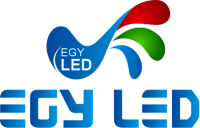6 Differences between LCD screen and LED display screen
There are 6 differences between LCD screen and LED display screen, as some customers face problems in distinguishing between them, so we had to limit these differences to the following points in order to facilitate our valued customers.
- Technical differences.
- Product thickness differences.
- Cost difference.
- Display function differences.
- Differences in maintenance methods.
- Differences in ergonomics.
1. Technical differences:
Among the most important 6 differences between LCD screen and LED display screen display is the size of the screens, which is the first difference in the apparent appearance, as the LCD screens face a problem in the fast-moving image, as blurring may appear.
This problem was solved in LED display screens by accelerating the speed of movement to a degree of up to 5 parts per second or less, which makes the problem almost non-existent.
Display principle
The LED display screen with small spacing belongs to self-illumination, and the LCD screen belongs to backlight+ LCD imaging. From the point of view of physical seam, the LED display screen with small spacing has no seam, and the LCD LCD splicing screen gap is 0.88-3.5mm.
Color saturation
Small-spaced LED display screen has higher color restoration and brighter color and for more information about EGYLED products click here.
Grayscale
The LED display screen with small spacing is 16bits, and the LCD splicing screen is 8bits.
Power consumption
Small spacing LED display screen and LCD splicing screen are efficient and energy-saving products.
2. Difference of product thickness:

indoor led display
The LCD splicing screen is much thicker than the small-space LED, and the small-space LED display screen has reached the ultra-thin design at present, it one of the 6 differences between LCD screen and LED display screen.
The small spacing LED display screen all-in-one machine is extremely simple in design, with an ultra-narrow frame of 3mm; Ultra-thin structure, the overall thickness is only 38.5mm.
3. Cost difference:
At present, the main costs are divided into three parts. The first is the purchase cost, the second is the maintenance cost, and the third is the service life.
Purchase cost
The price of LED display screen is new and more competitive. Maintenance costs is good, for more information about EGYLED Prices click here.
Maintenance costs
The small spacing LED only needs to repair the broken module separately, which does not affect the use, and the maintenance cost is low; LCD splicing screen: generally, the fault cannot be repaired, and only the full screen can be replaced.
Service life
The normal service life of small spacing LED display screen is 100000 hours, and the normal service life of LCD splicing screen is 40000 hours.
Brightness
For LCD panel and LED panel, users need not worry about insufficient brightness. However, the high brightness and small spacing LED display screen is facing the problem of high brightness. Before selecting LED display screen, users must consider whether it matches the display environment.
4. Difference of display function:
Although LED and LCD displays are mosaic screen display products, most of which are determined by display control devices, there are also strong or weak, and the display functions are completely different.
For example, LED display mainly displays large screen, and the window can be realized by the processor roaming and multi-screen display at the same time, so it is more suitable in the case of signal source. Among the top 6 differences between LCD screen and LED display screen that customers are looking for.
The Lot splicing screen can be spliced into a large screen display, and can also support single-screen display signals, single-screen splicing multi-channel signals, cross-screen splicing and roaming display effects, so that multiple signal sources of a single signal source can be displayed at the same time and decoding display can be realized.
5. Differences in maintenance methods:
Most LCD screens adopt post-maintenance mode – maintenance access is reserved at the rear. It is necessary to leave enough maintenance access at the back of the screen, generally about 70cm to 1m wide, which requires high construction space and will compress the visible space to a certain extent.
Small spacing LED display all-in-one machine full front maintenance, no need to reserve maintenance channels, convenient maintenance, space saving, full front maintenance.
6. Differences in use environment:
The LCD splicing screen can only be used indoors because it is composed of many electronic components. Like all electronic products, it does not have waterproof characteristics, so it is suitable for use in indoor dry environment.
The LED display screen can be used indoors or outdoors, which is also determined by its special structure. It can be used in outdoor environment after adding waterproof measures.
Based on the above, there are several advantages of LED display screens, which are:
- The strength of its brightness, clarity and depth of colors.
- The power of the viewing angle and the power of the backlight.
- High energy efficiency.
- The response time is up to 1ms, and in some types of LED display screens it may reach 5ms.
There are several disadvantages of LCD screens compared to LED screens, including
- Backlight leakage.
- No deepening of the black color.
- Weak viewing angle, which means that it does not appear clear when viewed from an angle rather than straight.
- Its lifespan is short compared to LED screens.
Twice the response time, which means that it will be weak in fast shots in movies and games It is not recommended to use it in places with low lighting due to the weakness of the black color and the intensity of its lighting. It is recommended to use it in places with high lighting or to watch movies or fast matches.

